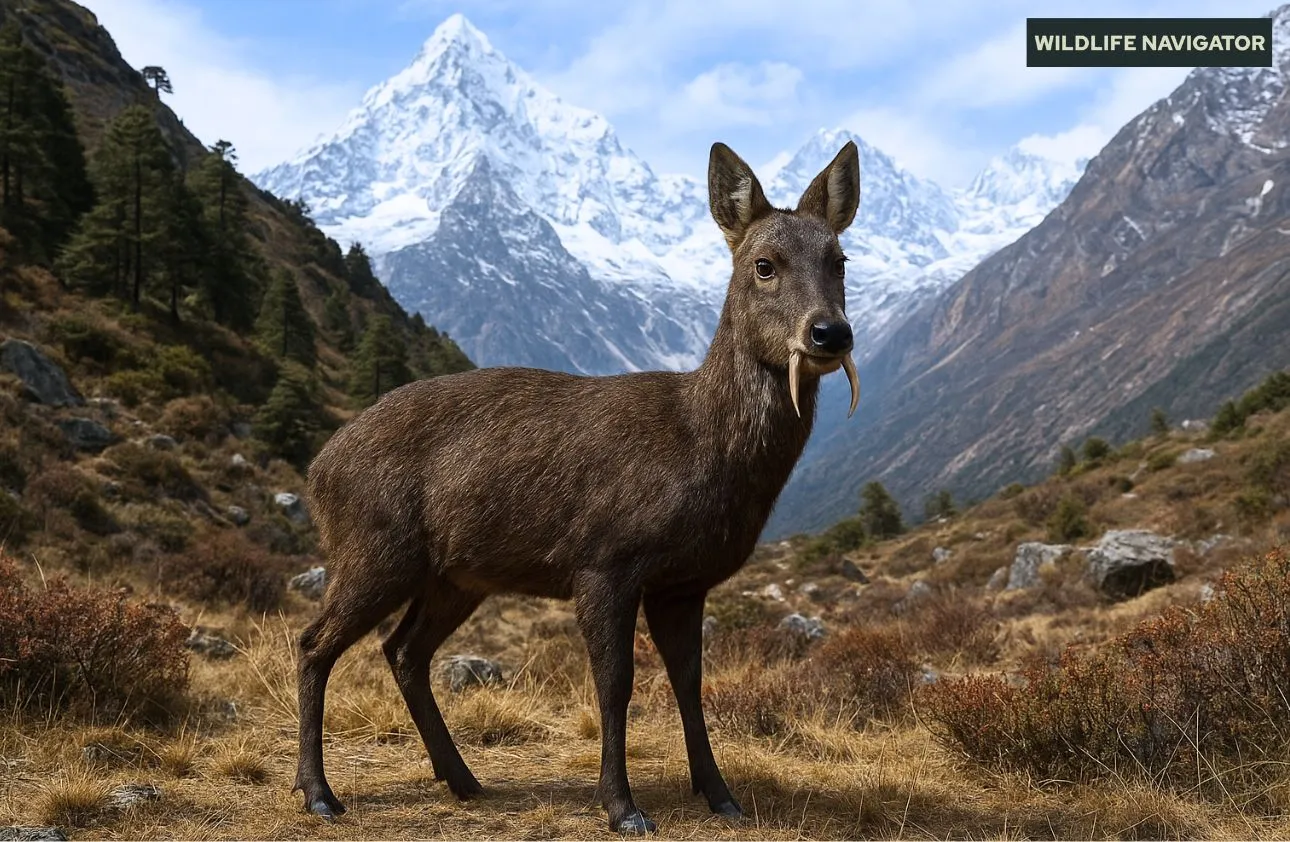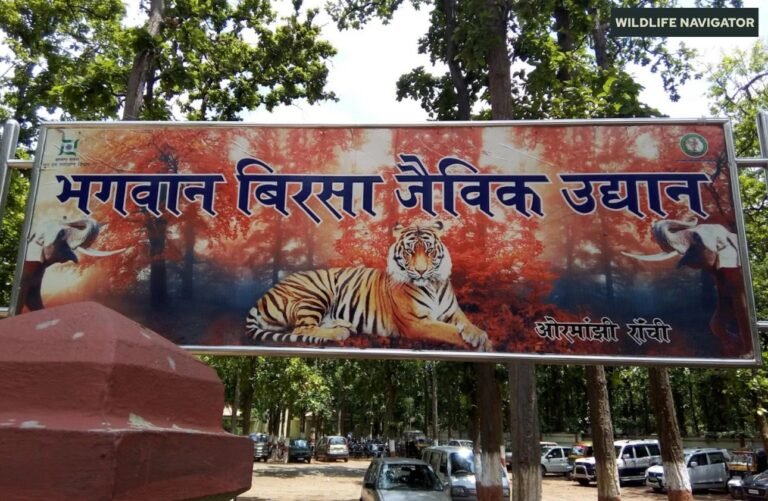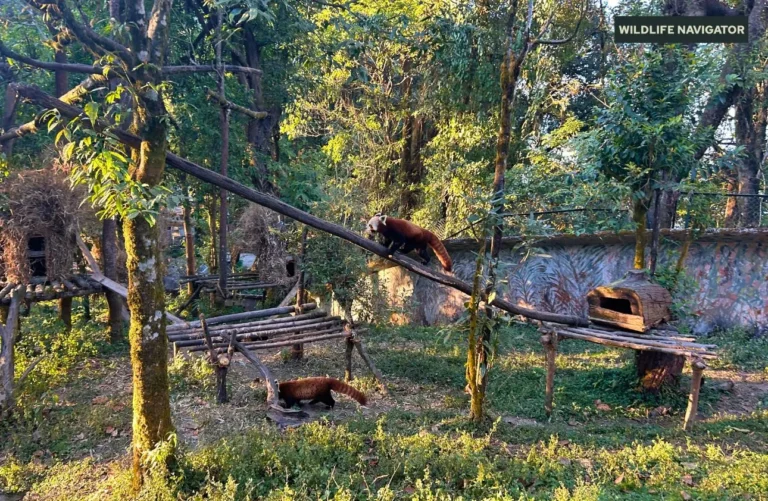Musk Deer: The Elusive Jewel of the Himalayas

High in the misty folds of the Himalayas lives one of nature’s most secretive and enchanting creatures — the Musk Deer (Moschus spp.). Unlike most deer, this small and solitary mammal stands apart for a unique reason: it possesses no antlers, but instead, the males grow long, fang-like tusks and carry a precious musk gland, an organ that has captivated humans for centuries.
The musk produced by this gland is one of the most valuable natural substances in the world, long used in perfumes and traditional medicine. Unfortunately, this very trait has made the musk deer a victim of relentless poaching and illegal wildlife trade.
Found in the high-altitude forests and alpine meadows of the Himalayas and parts of Central and East Asia, the musk deer is a symbol of fragility and beauty — a reminder of how delicate mountain ecosystems truly are. Their shy, solitary nature and remarkable adaptations to cold, rugged terrain make them a true jewel of the Himalayas, rarely seen but deeply admired by those who know of their existence.
Taxonomy and Species Overview
The Musk Deer belongs to a primitive and unique lineage of hoofed mammals, scientifically classified under the family Moschidae. Unlike true deer (family Cervidae), musk deer are distinct in both their appearance and evolutionary history.
- Scientific Name: Moschus spp.
- Family: Moschidae
- Order: Artiodactyla (even-toed ungulates)
Recognized Species of Musk Deer
There are several recognized species of musk deer found across Asia, each adapted to specific terrains and climates:
Taxonomy and Species Overview
The Musk Deer belongs to a primitive and unique lineage of hoofed mammals, classified under the family Moschidae. Unlike true deer (family Cervidae), musk deer are distinct in both appearance and evolutionary history.
- Scientific Name: Moschus spp.
- Family: Moschidae
- Order: Artiodactyla (even-toed ungulates)
Recognized Species of Musk Deer
1. Himalayan Musk Deer (Moschus leucogaster)
- Range: India (Himalayan states), Nepal, Bhutan
- Habitat: Alpine forests, subalpine meadows (2,500–4,500 m)
- Conservation: Endangered (IUCN), protected in Indian national parks like Kedarnath Wildlife Sanctuary, Nanda Devi National Park, Gangotri NP
2. Kashmir Musk Deer (Moschus cupreus)
- Range: Northern India, Pakistan, Afghanistan
- Habitat: Remote, high-altitude forests
- Conservation: Endangered (IUCN), populations are highly fragmented
3. Alpine Musk Deer (Moschus chrysogaster)
- Range: Tibetan Plateau, parts of western China
- Habitat: Subalpine scrublands, conifer forests
- Conservation: Endangered (IUCN), threatened by poaching
4. Siberian Musk Deer (Moschus moschiferus)
- Range: Russia (Siberia & Far East), Mongolia, northeastern China, North & South Korea
- Habitat: Cold forests, taiga
- Conservation: Vulnerable (IUCN), populations are more stable than in South Asia
5. Anhui Musk Deer (Moschus anhuiensis)
- Range: Eastern China
- Habitat: Fragmented forests
- Conservation: Endangered (IUCN), very restricted range
6. Black Musk Deer (Moschus fuscus)
- Range: Himalayan foothills, western China
- Habitat: Rocky slopes, alpine scrublands
- Conservation: Endangered (IUCN), limited population pockets
Each species shares similar features but varies slightly in colour, size, and altitude range.
Key Physical Characteristics
- Small and compact body (height ~50–60 cm).
- Males possess long, downward-curving canine teeth instead of antlers — used for territorial fights during mating season.
- Coat: dense, brownish-grey fur that helps insulate against freezing temperatures.
- Large, rounded ears and a short tail.
- Possess a musk gland (in males) located near the genital area — the defining trait of the species.
This evolutionary oddity bridges the gap between early deer-like mammals and modern ungulates, offering scientists valuable insight into evolutionary adaptation in harsh alpine environments.
Unique Features and Adaptations
The Musk Deer stands out among all deer species for its fascinating anatomical and behavioural adaptations that allow it to thrive in the harsh, icy environments of the Himalayas. Every trait seems designed for stealth, survival, and solitude.
The Musk Gland – Nature’s Fragrance Treasure
The defining feature of the male musk deer is the musk gland, a small, pouch-like organ located near the abdomen.
- The musk it secretes is a thick, aromatic substance used by males to mark territory and attract females during the breeding season.
- This musk became highly prized in human culture — once used in luxury perfumes, traditional medicine, and religious rituals.
- Tragically, its value has also made the species a major target for poaching, as obtaining the musk requires killing the animal.
To curb this, synthetic musk alternatives have been developed, reducing the pressure on wild populations.
Fang-like Tusks Instead of Antlers
Unlike other deer species that grow antlers, male musk deer possess long, curved upper canines — fang-like teeth that give them a striking, almost prehistoric appearance.
- These tusks are used in male-to-male combat during the mating season.
- The absence of antlers reduces body weight, an advantage in steep and rugged habitats.
This unique adaptation showcases how evolution has fine-tuned the species for energy efficiency in challenging mountain environments.
Camouflage and Stealth
Their dark brown to greyish coat, speckled with lighter shades, provides perfect camouflage against rocks, shrubs, and snow patches. Combined with their quiet, solitary behaviour, this helps them avoid predators such as snow leopards and wolves.
Adapted to Alpine Life
- Hooves: Small and sharp-edged, designed for gripping rocky slopes and icy ground.
- Light Body: Allows agile movement on steep cliffs and through dense undergrowth.
- Thick Fur: Dense undercoat insulates against subzero temperatures and strong mountain winds.
These adaptations make the musk deer an expert mountaineer, capable of navigating some of the world’s most challenging terrains.
Habitat and Distribution
The Musk Deer thrives in some of the most remote and rugged landscapes on Earth — places where few other large mammals can survive. Its preferred environment mirrors its secretive nature: cold, quiet, and covered in alpine shadows.
Natural Habitat
Musk deer are typically found in temperate forests, alpine scrublands, and subalpine meadows, usually between 2,500 to 4,500 meters above sea level. These regions are characterised by:
- Dense undergrowth of birch, rhododendron, and juniper.
- Rocky slopes and forested valleys provide excellent cover.
- Snow-covered areas during winter force limited seasonal migration to lower altitudes.
Their solitary lifestyle and elusive behaviour mean they prefer undisturbed regions far from human settlements.
Global Distribution: Key Countries and Species
Musk deer species are distributed across Asia’s mountainous belt, from the Himalayas to Siberia. Key regions include:
- Nepal & Bhutan – Himalayan Musk Deer (Moschus leucogaster)
- Found in alpine forests and high-altitude meadows.
- Populations are threatened by poaching, though some areas benefit from strict protection under national parks.
- China – Alpine Musk Deer (Moschus chrysogaster) and Anhui Musk Deer (Moschus anhuiensis)
- Alpine musk deer inhabit the Tibetan Plateau and western provinces.
- Anhui musk deer are restricted to eastern China, surviving in fragmented forests.
- Russia & Mongolia – Siberian Musk Deer (Moschus moschiferus)
- Spread across Siberia, the Russian Far East, and Mongolia.
- Adapted to cold, snowy forests and taiga habitats.
- Populations are more stable here compared to South Asia, but still face threats from hunting.
- Afghanistan & Pakistan – Kashmir Musk Deer (Moschus cupreus)
- Found in remote, high-altitude regions of northern Afghanistan and Kashmir.
- Considered endangered due to extreme poaching pressure and habitat fragmentation.
- North Korea & South Korea – Siberian Musk Deer (Moschus moschiferus)
- Rare and elusive; exact population numbers are unclear due to limited surveys.
- Tibet & Central Asia – Various Alpine and Black Musk Deer species
- Occupying rugged mountainous regions at elevations above 3,500 meters.
- Surviving in isolated pockets where human encroachment is minimal.
Each species is adapted to local conditions — from the snowfields of the Tibetan Plateau to the coniferous forests of the Altai Mountains.
Where to Spot Musk Deer In India
In India, the Musk Deer is primarily found in the Himalayan states, thriving in high-altitude forests and national parks such as:
- Uttarakhand: Kedarnath Wildlife Sanctuary, Nanda Devi National Park, Gangotri National Park
- Himachal Pradesh: Great Himalayan National Park
- Sikkim: Khangchendzonga National Park
- Arunachal Pradesh: Dibang Wildlife Sanctuary, Tawang region
- Ladakh (J&K): Hemis National Park
These regions offer the ideal combination of cold climate, vegetation cover, and isolation that musk deer need to survive.
Elevation and Climate Preferences
- Elevation: 2,500–4,500 meters (sometimes higher in Tibet).
- Temperature: Adapted to freezing conditions; thick fur protects them year-round.
- Vegetation: Prefers mixed forests with moss, lichens, and shrubs — key sources of food and shelter.
The musk deer’s distribution reflects a fine balance between survival and solitude — it lives where few predators dare to tread, yet where human intrusion is slowly reaching even the highest slopes.
Behaviour and Diet
The Musk Deer is a master of stealth and solitude — rarely seen, even in regions where it’s known to be common. Its shy, cautious behaviour, combined with its excellent camouflage, allows it to live quietly among the rocky cliffs and dense forests of the Himalayas.
Solitary and Secretive Nature
Musk deer are solitary animals, with males and females coming together only during the breeding season. They prefer to live in isolation, minimising encounters with predators and humans.
- Activity pattern: Mostly crepuscular, meaning they are active during dawn and dusk.
- Movement: They move silently, often freezing motionless when sensing danger.
- Territorial behaviour: Males are territorial, marking their ranges using scent from their musk glands and faecal droppings.
Their ability to remain undetected in steep, forested terrain has earned them the nickname “ghosts of the Himalayas.”
Communication and Scent Marking
Communication among musk deer relies primarily on scent, rather than sound.
- Males mark territory using secretions from the musk gland.
- They also rub their scent on rocks and vegetation to signal dominance or attract females.
- During the mating season, males may grunt or make low bleating sounds, but otherwise remain silent throughout the year.
Diet
Musk deer are strict herbivores, feeding on a wide variety of plant matter available in their high-altitude habitat. Their diet includes:
- Leaves, grasses, and herbs
- Twigs, shoots, and mosses
- Lichens — an important food source during winter when vegetation is scarce
- Occasionally, they also nibble on tender bark and shrubs
They are efficient feeders, using selective browsing to obtain nutrients from limited alpine vegetation, helping them survive where few herbivores can.
Seasonal Behaviour
- Summer: They graze on lush alpine meadows rich in herbs and grasses.
- Winter: Move slightly lower in altitude to find food and shelter under coniferous cover.
- Breeding season: Increased movement and scent marking between November and January.
The musk deer’s quiet, elusive behaviour perfectly suits its mountain home — every step calculated, every movement hidden, making it one of the most mysterious mammals in Asia.
Reproduction and Life Cycle
The Musk Deer’s reproductive cycle is as secretive as its lifestyle — hidden deep within the forests and rocky slopes of the Himalayas. Mating, birthing, and rearing of young all take place in secluded areas, rarely witnessed by humans.
Mating Season
The breeding season occurs during the winter months, from November to January.
- During this time, males become highly territorial and aggressive, using their fang-like tusks to compete for females.
- They mark their territories more frequently with scent from the musk gland to signal dominance.
- Vocal communication, though rare, includes low grunts or bleats to attract mates or warn rival males.
Once mating is complete, the pair separates, and the female becomes solely responsible for raising the young.
Gestation and Birth
- Gestation period: Around 185–195 days (approximately 6 months).
- Females typically give birth between June and July, coinciding with the warmer Himalayan summer.
- Usually, only one fawn is born at a time, though twins can occasionally occur.
- The fawn is born with spots for camouflage, helping it blend into forest litter and rocky surroundings.
Mother’s Care
Musk deer mothers are extremely protective.
- The fawn is hidden in dense vegetation or rocky crevices for the first few weeks after birth.
- The mother visits briefly to nurse and clean the young, keeping scent traces minimal to avoid attracting predators.
- Gradually, the fawn begins to follow the mother, learning to forage and navigate steep terrains.
This discreet parenting strategy greatly enhances survival chances in predator-rich environments.
Growth and Maturity
- Weaning: After about 3 months, young deer begin feeding independently.
- Sexual maturity: Reached at 1.5 to 2 years of age.
- Lifespan: In the wild, musk deer live up to 10–14 years; in captivity, they may reach up to 20 years under good care.
Their slow reproductive rate — typically one offspring per year — makes population recovery challenging, especially in regions affected by poaching.
Conservation Status
The Musk Deer is one of the most endangered mammals in Asia, facing intense threats from illegal hunting, habitat loss, and climate change. Its tragic allure lies in the very thing that makes it unique — the musk gland, which has been exploited for centuries and continues to endanger its survival.
IUCN Red List Status
- Himalayan Musk Deer (Moschus leucogaster): Endangered
- Kashmir Musk Deer (Moschus cupreus): Endangered
- Alpine Musk Deer (Moschus chrysogaster): Endangered
- Siberian Musk Deer (Moschus moschiferus): Vulnerable
All species of musk deer are listed under Appendix I of CITES (Convention on International Trade in Endangered Species) — which means international trade in musk or its derivatives is strictly prohibited.
Major Threats
- Poaching for Musk:
- The most significant threat to the species.
- Musk pods are illegally harvested for use in perfumes and traditional medicines.
- A single male produces only 25–30 grams of musk, making it extremely valuable — often fetching thousands of dollars per kilogram on the black market.
- Habitat Loss:
- Deforestation, grazing pressure, and human encroachment in the Himalayas are shrinking the musk deer’s habitat.
- Predation:
- Natural predators like snow leopards, wolves, and foxes prey on musk deer, but human activities have become a far greater danger.
- Climate Change:
- Rising temperatures and shifting snowlines affect vegetation zones, reducing suitable alpine habitats.
Protection in India
In India, the musk deer is provided the highest level of protection under the:
- Wildlife (Protection) Act, 1972 – Schedule I, making hunting and trade completely illegal.
- Protected across national parks and wildlife sanctuaries in Uttarakhand, Himachal Pradesh, Sikkim, Arunachal Pradesh, and Ladakh.
Additionally, conservation organisations and government bodies have initiated anti-poaching patrols, community awareness programs, and breeding centres to stabilise populations.
Global Conservation Status
- All musk deer species are listed on CITES Appendix I, banning international trade in wild-caught individuals or musk pods.
- Countries like Nepal, China, and Russia have established national parks and reserves specifically aimed at protecting musk deer populations.
- Some regions have initiated captive breeding programs and reintroduction projects, aiming to bolster dwindling numbers.
The musk deer’s international range emphasises the need for cross-border conservation cooperation, anti-poaching enforcement, and awareness campaigns. Protecting these shy creatures is not just a regional responsibility — it’s a global effort to preserve a unique and ancient lineage of mammals.
Population Trend
Despite ongoing conservation efforts, musk deer populations remain fragmented and declining. However, in areas with strict protection — like Kedarnath Wildlife Sanctuary and Great Himalayan National Park — numbers show gradual signs of recovery.
The musk deer’s survival depends on a balance between law enforcement, community participation, and global awareness. Without urgent action, this ancient Himalayan species could fade into myth — remembered only for the fragrance that doomed it.
Musk Deer and Humans: A Complicated Relationship
The musk deer’s relationship with humans is a story of fascination and exploitation:
- Musk for Perfume & Medicine: Humans have long hunted males for the aromatic musk gland, prized in luxury perfumes and traditional remedies.
- Poaching Threat: This high demand has made musk deer one of the most poached mammals in Asia.
- Conservation Efforts: International trade is banned under CITES Appendix I, and synthetic musk is now used to reduce pressure on wild populations.
- Cultural Significance: In some Himalayan communities, musk has spiritual and medicinal importance, creating both conservation challenges and opportunities for sustainable use.
This complex interaction shows how human desire can endanger a species, but also how awareness and regulation can help protect it.
Interesting Facts about Musk Deer
Here are some fascinating tidbits about this elusive Himalayan species:
- Musk Value: Just a few grams of natural musk can fetch thousands of dollars on the black market.
- Fang Battles: Males fight silently using their tusks during the mating season — no antlers needed.
- Ghost of the Mountains: Extremely shy and solitary, they are rarely seen in the wild.
- High-Altitude Expert: Adapted to survive in icy slopes, rocky cliffs, and alpine forests.
- Slow Reproduction: Usually produces only one fawn per year, making population recovery slow.
- Eco Indicator: Presence of musk deer indicates healthy high-altitude ecosystems.
Conclusion
The Musk Deer is more than just a mountain dweller; it is a symbol of the fragile beauty of the Himalayas. With its secretive habits, unique adaptations, and the precious musk gland, it embodies both the wonders and vulnerabilities of high-altitude wildlife.
Human fascination has brought both peril and protection — poaching for musk has endangered the species, while conservation efforts, protected areas, and awareness campaigns are slowly helping populations recover.
Preserving the musk deer means protecting entire alpine ecosystems, ensuring that future generations can witness these shy, enchanting “ghosts of the Himalayas.” Responsible tourism, anti-poaching measures, and habitat conservation are crucial to maintaining this delicate balance between humans and nature.





